In the sacred land of Vrindavan, where every lane whispers stories of Lord Krishna’s pastimes, stands the Radha Raman Temple — a jewel of devotion and heritage. Known for its self-manifested deity and centuries-old traditions, this temple draws pilgrims and seekers from around the world who come to witness its living legacy of bhakti.
The Origin Story
The temple’s history dates back to 1542 CE, when Gopala Bhatta Goswami, one of the six principal disciples of Chaitanya Mahaprabhu, established the shrine.
Legend has it that Goswami once collected twelve sacred Shaligram Shilas from the Kali-Gandaki River in Nepal. On the auspicious day of Narasimha Jayanti, one of these Shaligrams miraculously manifested into the enchanting deity of Lord Krishna, henceforth called Radha Raman — “the one who delights Radha.”
Architecture & Spiritual Symbolism
The temple showcases beautiful Rajasthani-style architecture in warm red sandstone, with intricate carvings that seem to breathe stories of love and devotion.
The idol of Radha Raman, about 30 cm tall, is carved from Shaligram stone and radiates an ineffable charm. Though there is no physical idol of Radharani here, her presence is honored by a magnificent crown placed beside the Lord, symbolizing their eternal togetherness.
Eternal Flame & Unbroken Worship
From the day the temple was established, an eternal fire has been burning in its kitchen. Even today, mahā-prasād for the deity is prepared using this sacred flame. Worship rituals have been carried out without interruption for nearly five centuries, led by the direct descendants of Gopala Bhatta Goswami.






















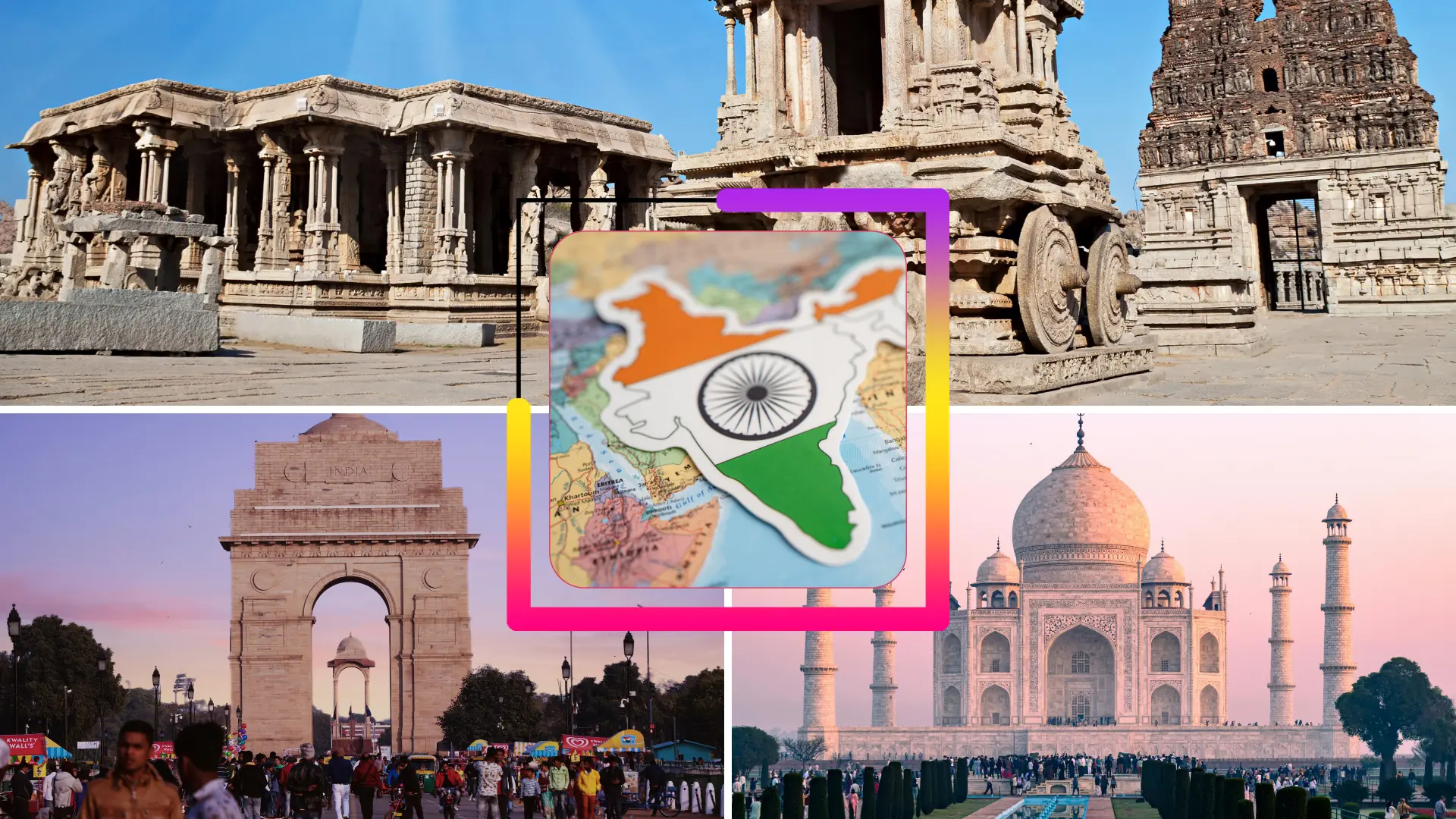










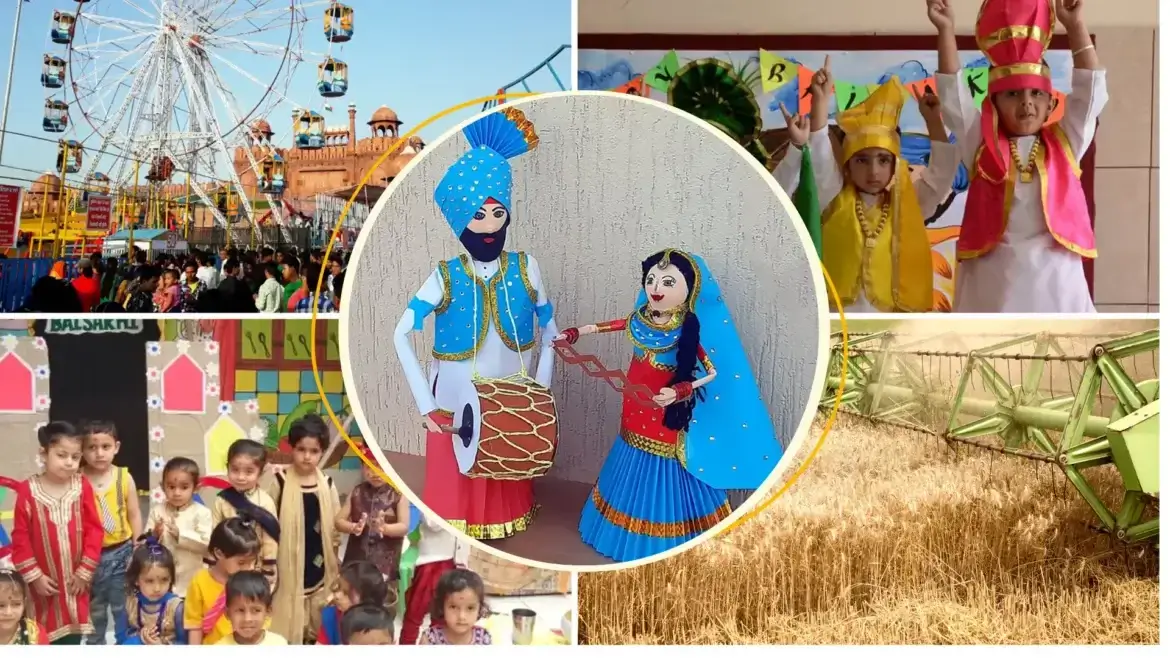








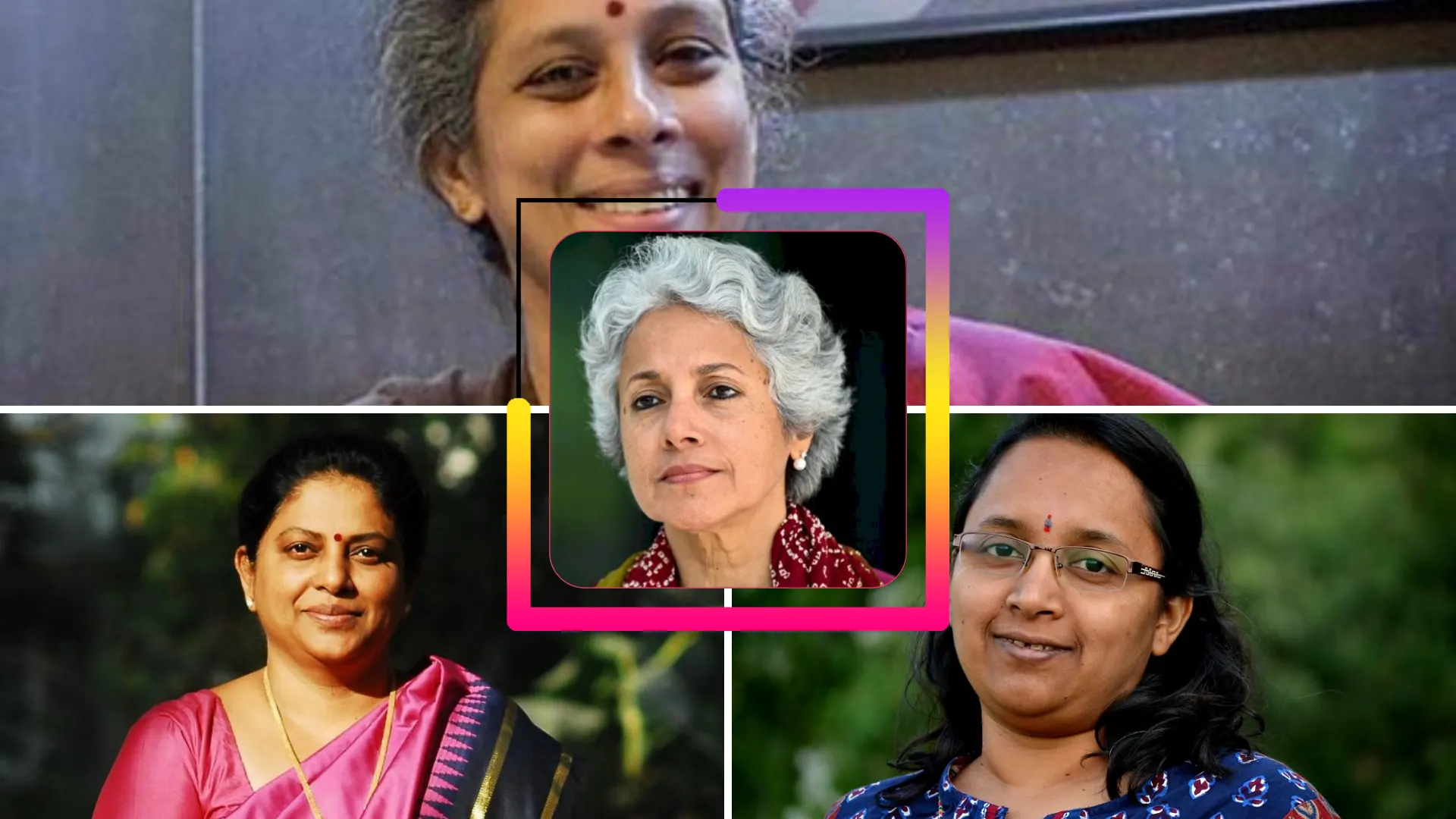
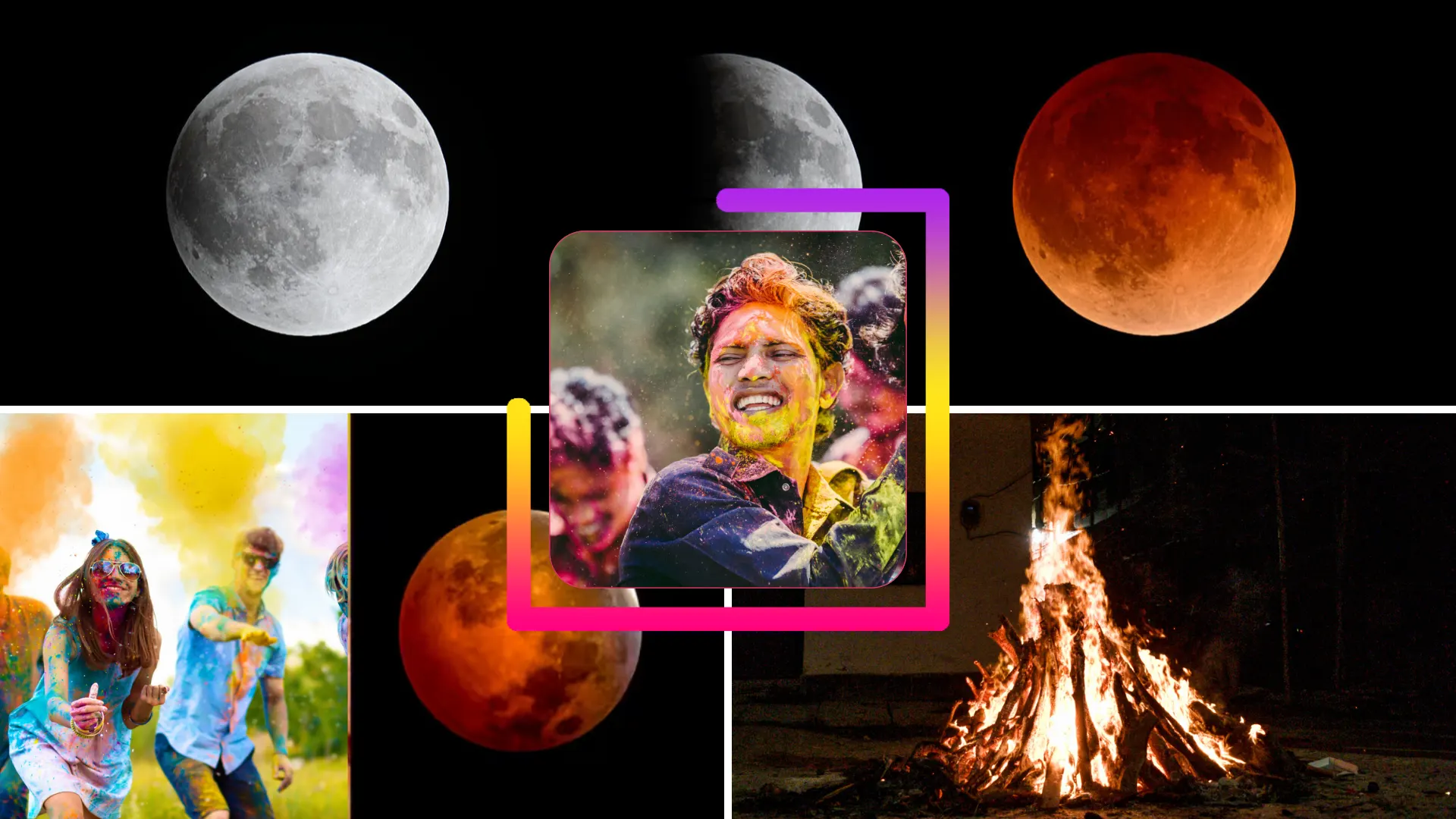
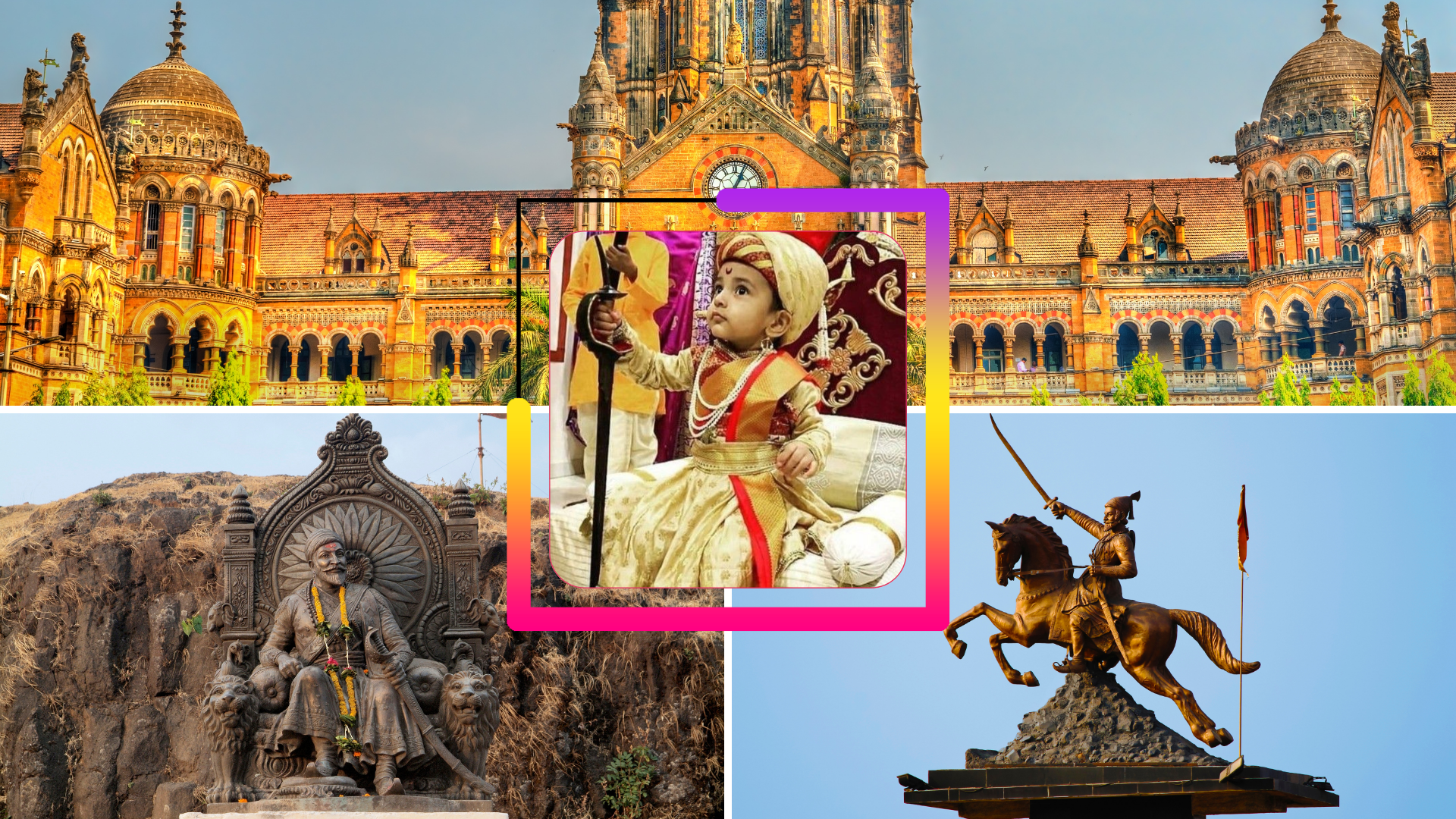




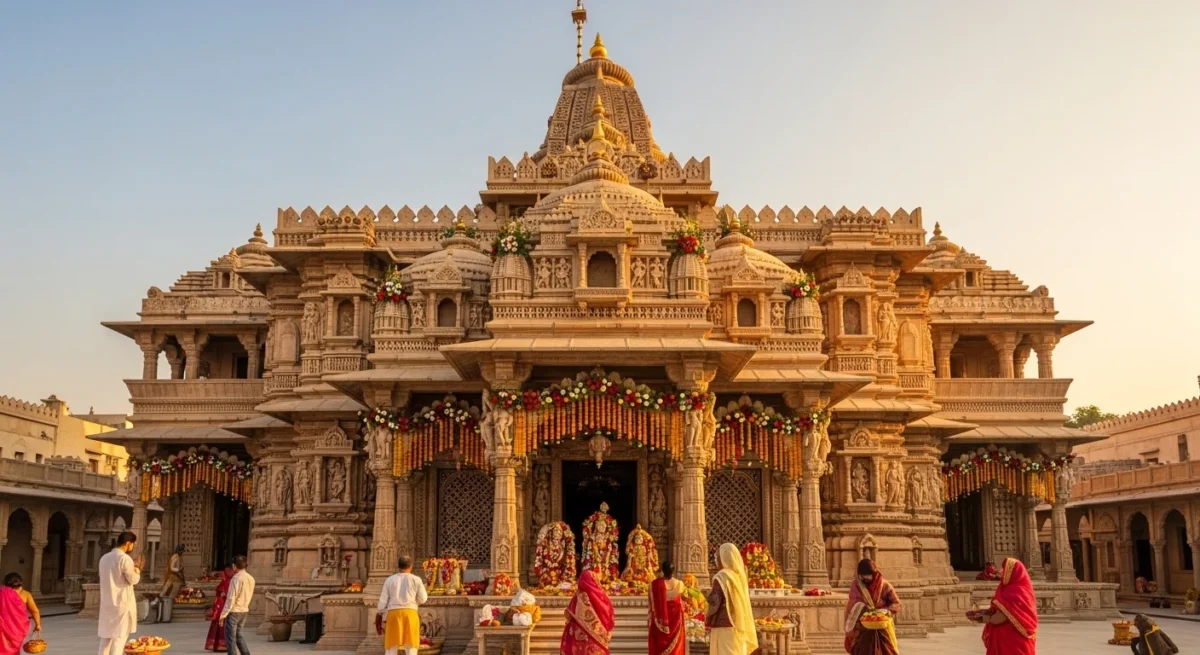
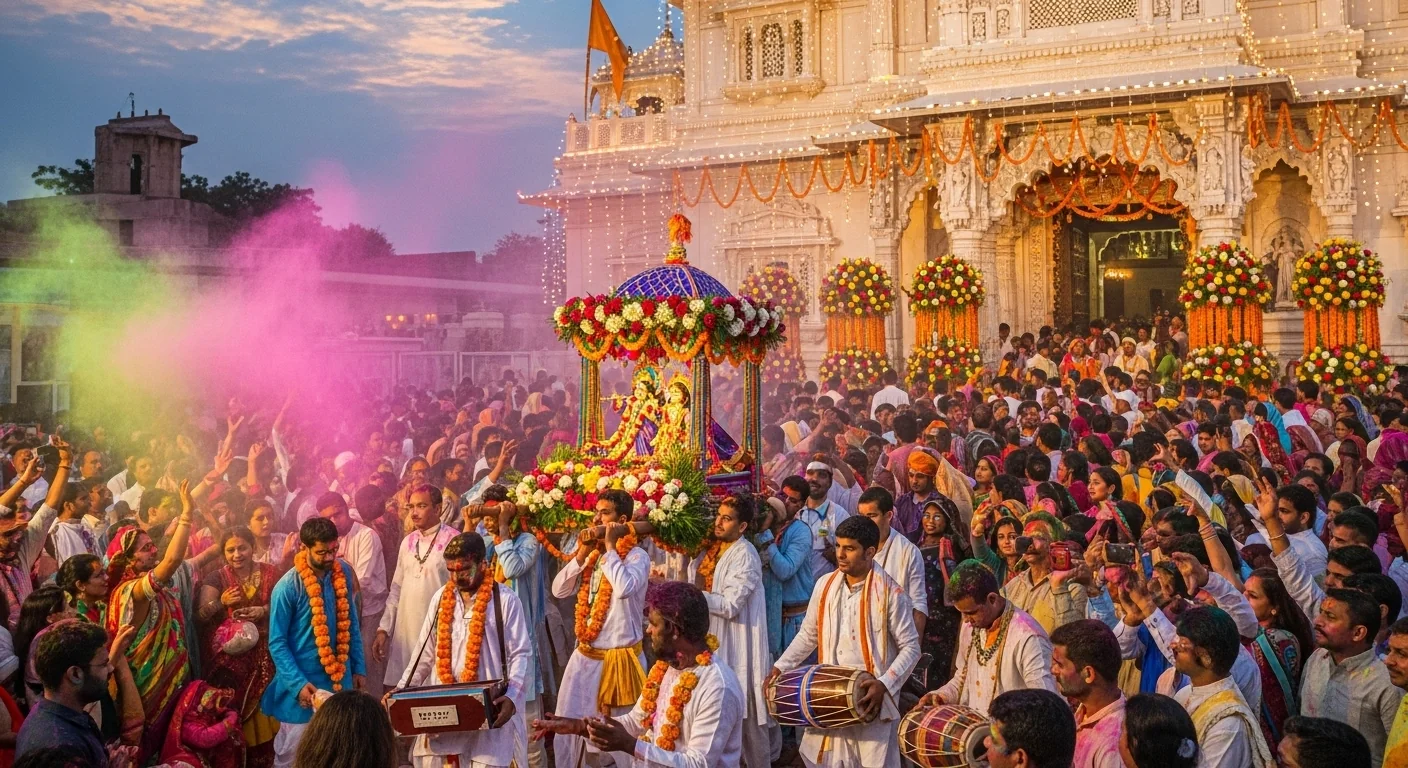
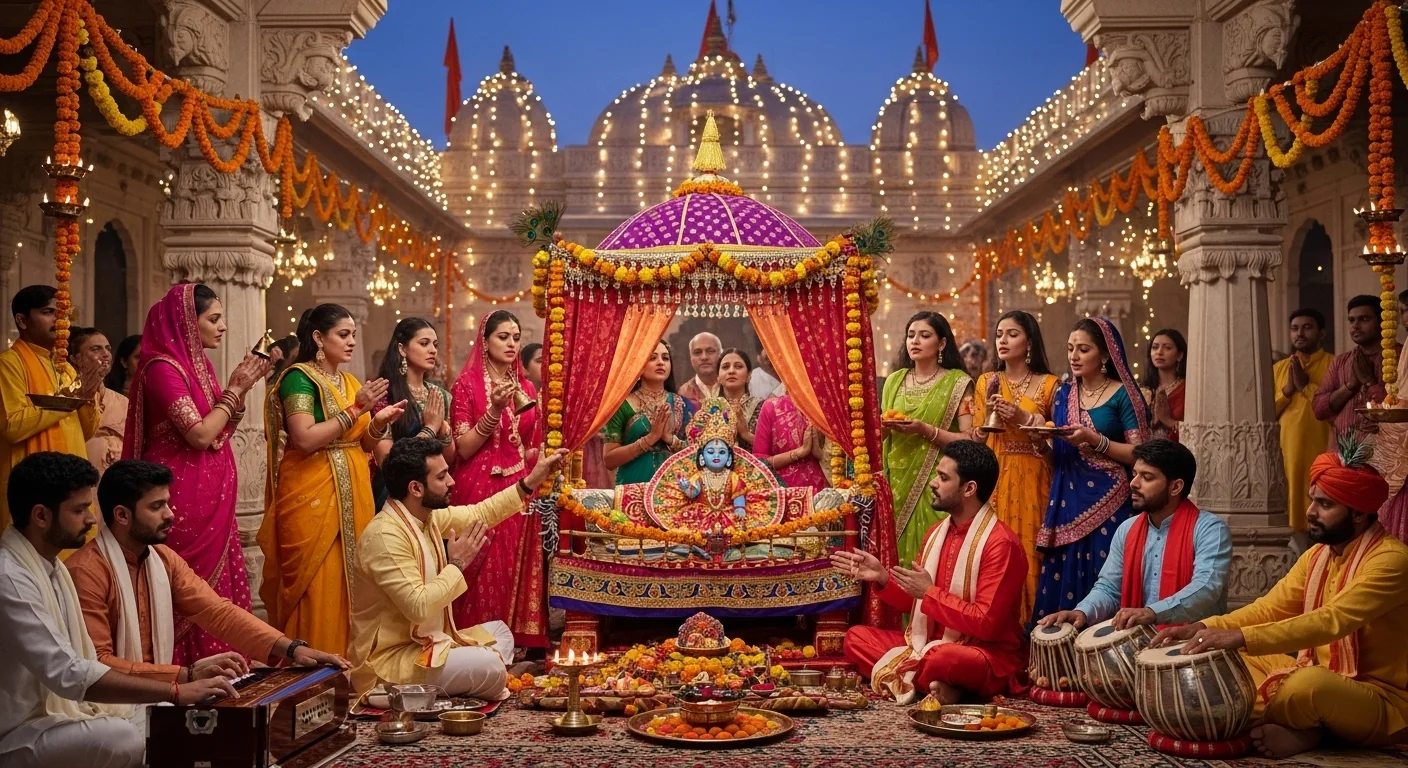







Leave a Comment